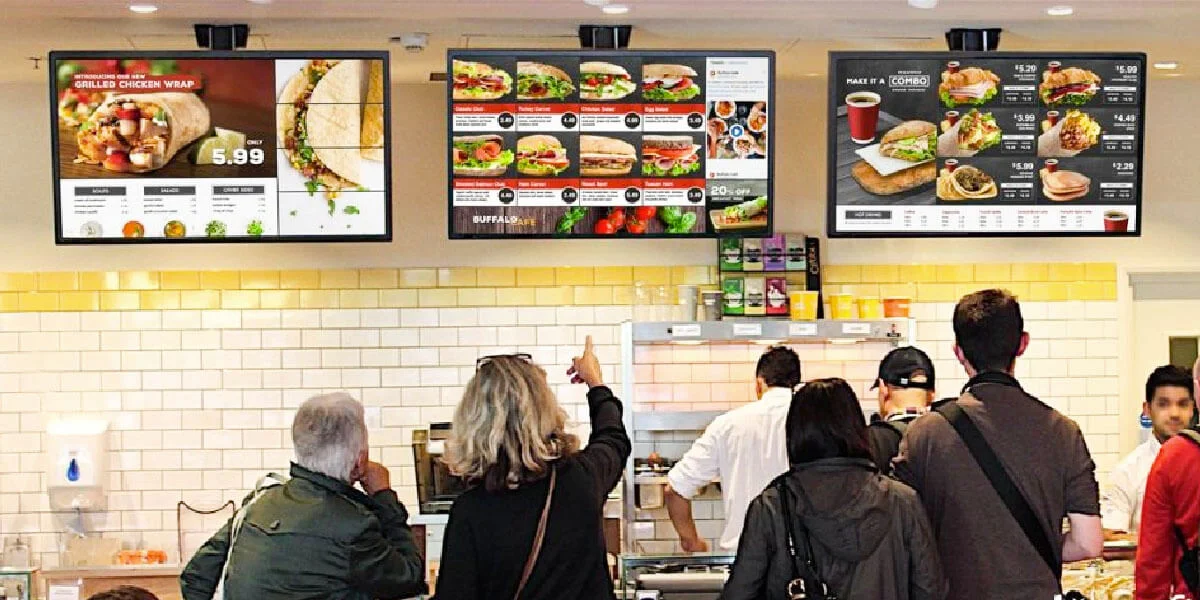Today, digital signage display screens are a part of the contemporary communication arsenal in any fast-paced, visual-dominated setting. It is the surest, most dynamic way of creating interest and getting messages across while making customer experience better, be it in a retail store or a corporate office. Let’s go through this ultimate guide on digital sign display screens and how they can transform your business.
What Is Digital Signage?
Digital signage is a form of presenting messages in multimedia, which mainly consists of images, videos, text, among others. Primarily placed screens in public places, modes of transportation, museums, stadiums, shops, hotels, restaurants, and offices form an interactive and multicultural way of displaying information.
The Advantages of Digital Signage Display Screens:
Better Engagement: Digital displays are much more effective than conventional signs that are simply printed or painted. Dynamic content has better chances to attract people’s attention, and viewers tend to stay longer looking at it.
Real-Time Updates: The other benefit of digital screens is that the content can be updated as soon as the new information is available. This makes information not only relevant but also timely in circumstances such as promotions, new products, or even in situations where there is an emergency.
One-Time Setup Cost: The cost of setting up digital signs is high upon installation; however, the ongoing cost of printing and posting static signs no longer applies. It, therefore, becomes far more profitable in the long term.
Interactivity: A touchscreen digital signage allows the user to touch the content shown on the signage, thereby making the interaction better. These applications can produce a considerable impact concerning the matters of orientation, product details, and customers’ opinions.
Analytics and Insights: Advanced digital signage systems can collect analytics data on how often content has been played, the interaction with it, and the level of engagement—the very data that is crucial for setting up marketing strategies.
Types of Digital Signage Display Screens:
LCD/LED Screens: LCD or LED screens are the most common form of digital signage, highly performing in both high resolution and brightness, and can be used both indoors and outdoors.
Video Walls: An integrated use of multi-monitor settings through joining them all to form a large display over one area to make great impressions.
Interactive Touchscreens: It includes the practice of content modification by users and can be fun and very interactive in nature.
Transparent Displays: Any type of display that shows data and images but is transparent, so one can see past it. It is believed that this technology will be useful in retail and exhibitions.
Digital Kiosks: These usually stand alone and have touch screens where the main use might be wayfinding or other information, though they can also allow for self-service.
Implementing Digital Signage: Key Considerations
Content Strategy: The relevance of digital signage lies in the content used in advertisements. It should be rich in visually appealing content with good quality images and data, kept updated often to maintain a great appearance.
Placement and Visibility: Think about the viewership angle, lighting, and how people would move through the space. Remember all displays should be visible and easily reached.
Software and Management: Consider a digital signage software solution that operates content, scheduling, and updating in real-time. In terms of delivery, cloud solutions will be flexible and easy to scale.
Selection of Hardware: Regard it as the investment of a quality screen manufactured specifically for the type of use. These are just some of the areas that would be considered when selecting the best projector, including resolution, brightness, durability, and interactivity.
Maintenance and Support: Like any system, your digital signage system will require ongoing maintenance. Be sure to choose a provider who can deliver a good backup service with some form of regular technical support.
Future Trends in Digital Signage:
AI and Personalization: Now it has been made possible to present information through artificial intelligence to such a level that whatever is being presented to the people becomes personal to them. Identification of the audience’s demographic status and their actions is made possible. This can help in making it more interesting and hence there will be a higher rate of conversion.
Integration with IoT: Interactive features are very common within digital signage with the IoT devices to make them smart and information-driven.
Augmented Reality (AR): An exciting and impressive application of AR technology via digital signage to provide a unique experience for its customers.
Sustainability: A number of types of sustainability are being done, where most of these businesses are involved in the green process by using energy-saving screens and recycling, and limiting the utilization of natural resources.
Digital display signs are dramatically changing the ways businesses communicate with their audiences. Engage, streamline operations, and drive growth with dynamic content power, real-time updating, and interactivity. Finally, with technology evolving, the opportunity for digital signage is almost endless. Therefore, embrace it today and be sure of visual communication in your future.





